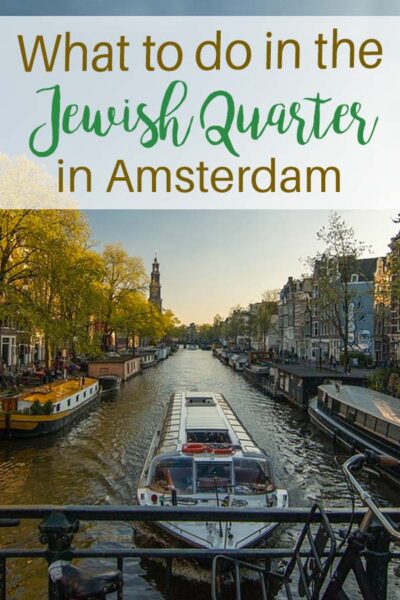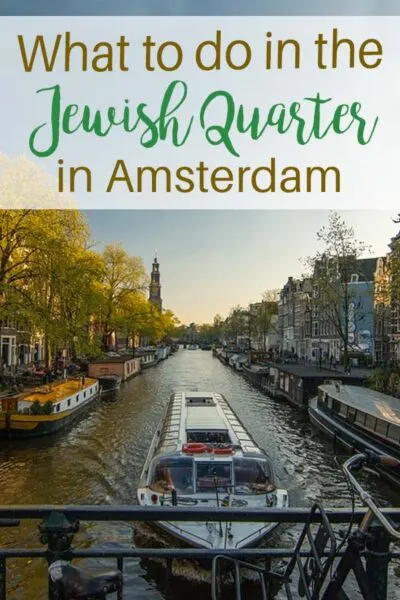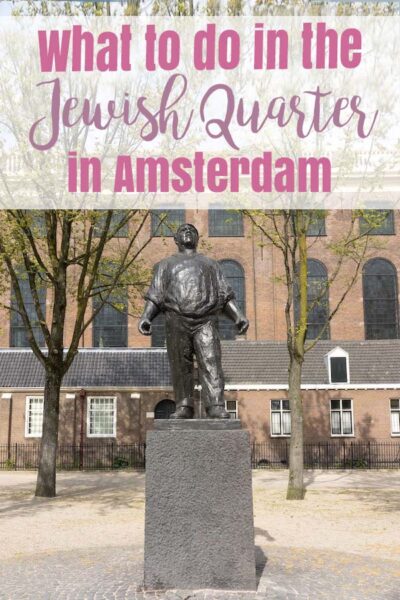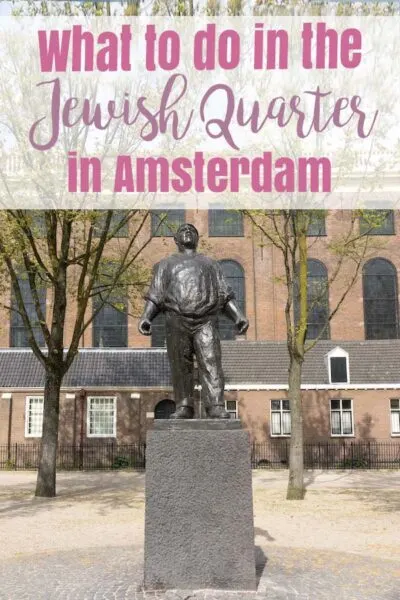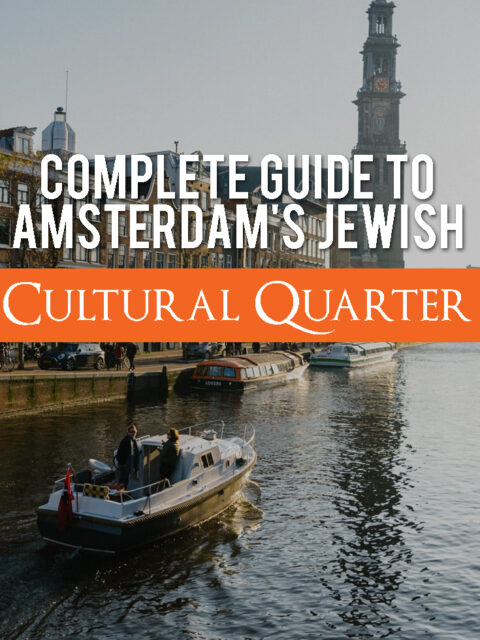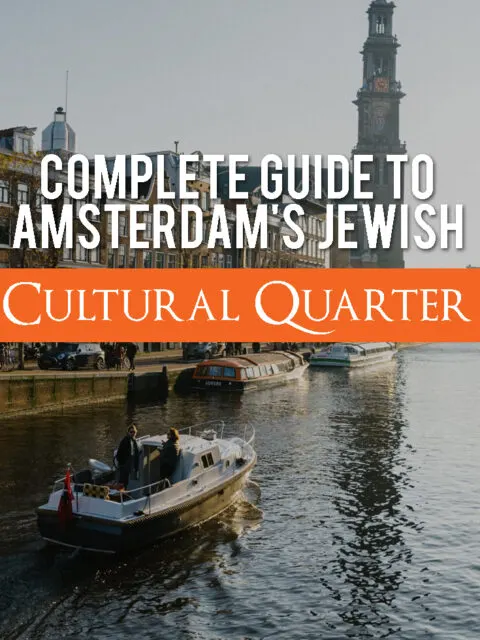Amsterdam for the last 370 years has been the home for the majority of the Dutch Jewish community. During the Holocaust 80% of the 80,000 Jews that lived in Amsterdam were killed in concentration camps. Non-Jews fought hard to save the Jews, their neighbors, friends and family, but unfortunately the Nazi party had more fire power.
Today, after a long term goal to rebuild the Jewish community, it has managed to grow back to 15,000 members. Amsterdam is known for its long withstanding religious tolerance, where you are free to practice whatever religion you choose to follow.


The historic buildings in the Jewish Quarter (Jodenbuurt) are currently preserved and managed by the Jewish Cultural Quarter organization. The aim is to conserve the historic Jewish Culture of Amsterdam.
There is one ticket that allows you to visit all main buildings in the Jewish Quarter; The Portuguese Synagogue, Jewish Historical Museum, The National Holocaust Memorial Hollandsche Schouwburg and the The National Holocaust Museum.
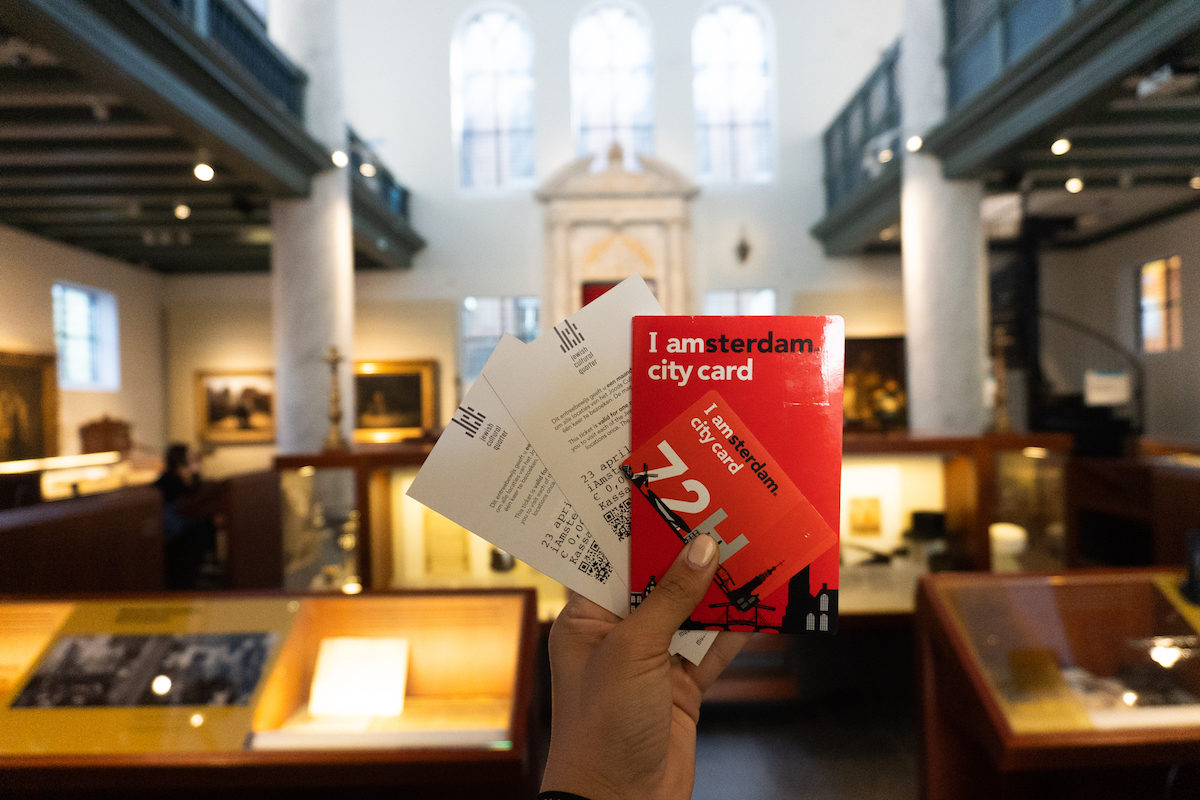

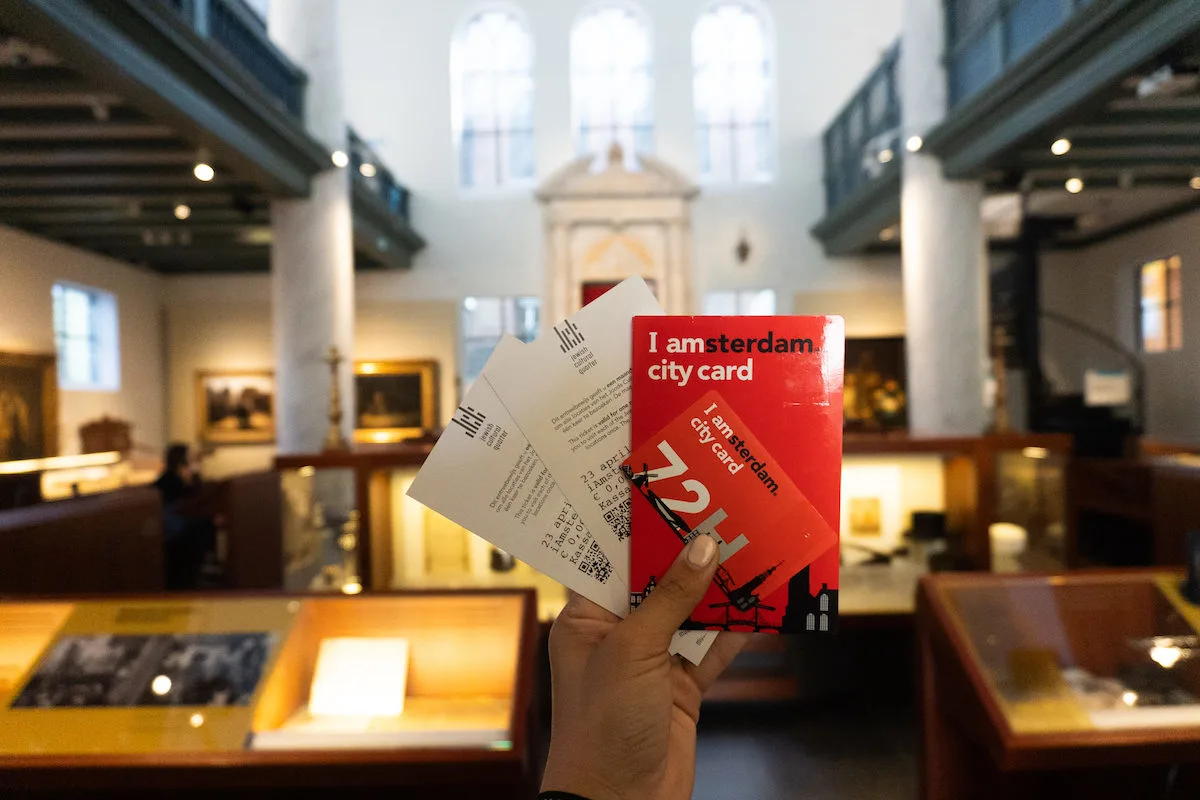

All the museums in the Jewish Quarter of Amsterdam, along with 60 other museums and attractions around the city, are included in the I amsterdam City Card for one price. Chose a pass between 1 to five days, depending on how many museums you plan to visit and enjoy free public transportation as well.
Self Walking Tour Map of the Jewish Quarter in Amsterdam:
At the Jewish Museum you can pick up a well made map with a self-guided walking tour through the Jewish Cultural Quarter of Amsterdam. The brochure is packed with information about Jewish owned buildings, businesses, synagogues and monuments.
What to see at the Jewish Quarter in Amsterdam:
1. The Portuguese Synagogue
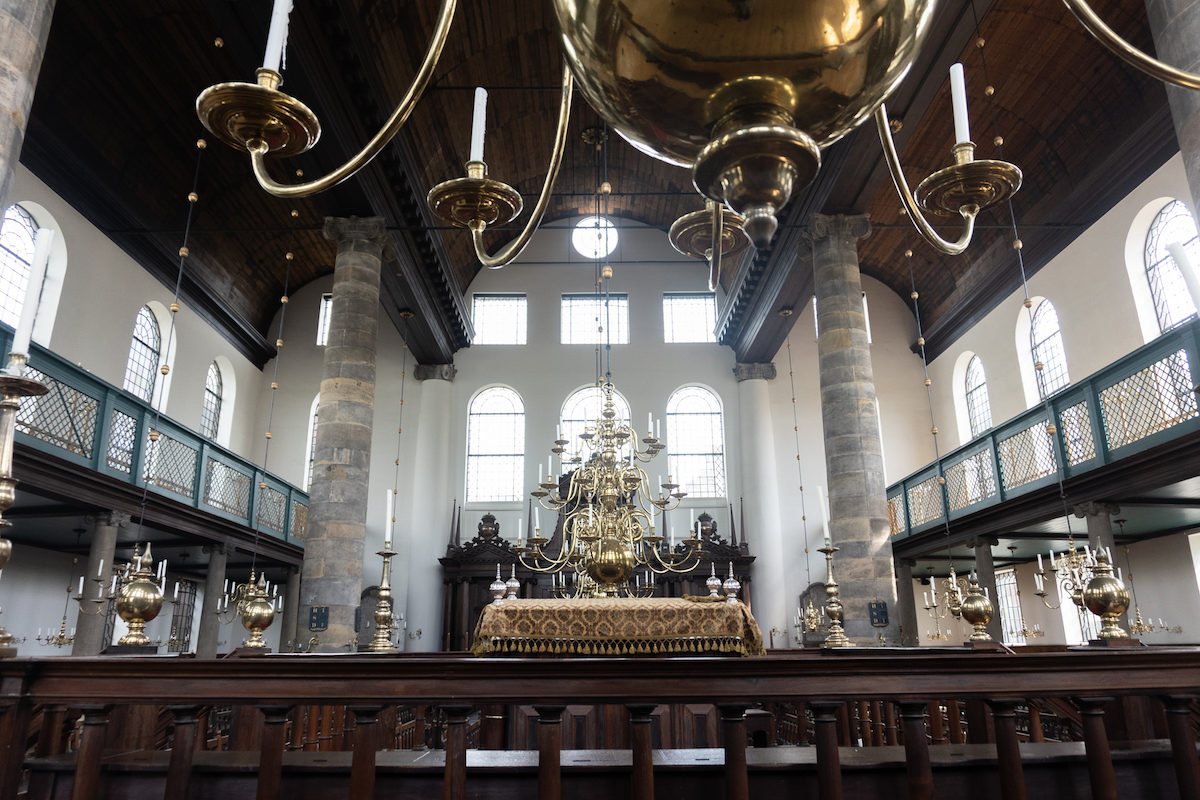

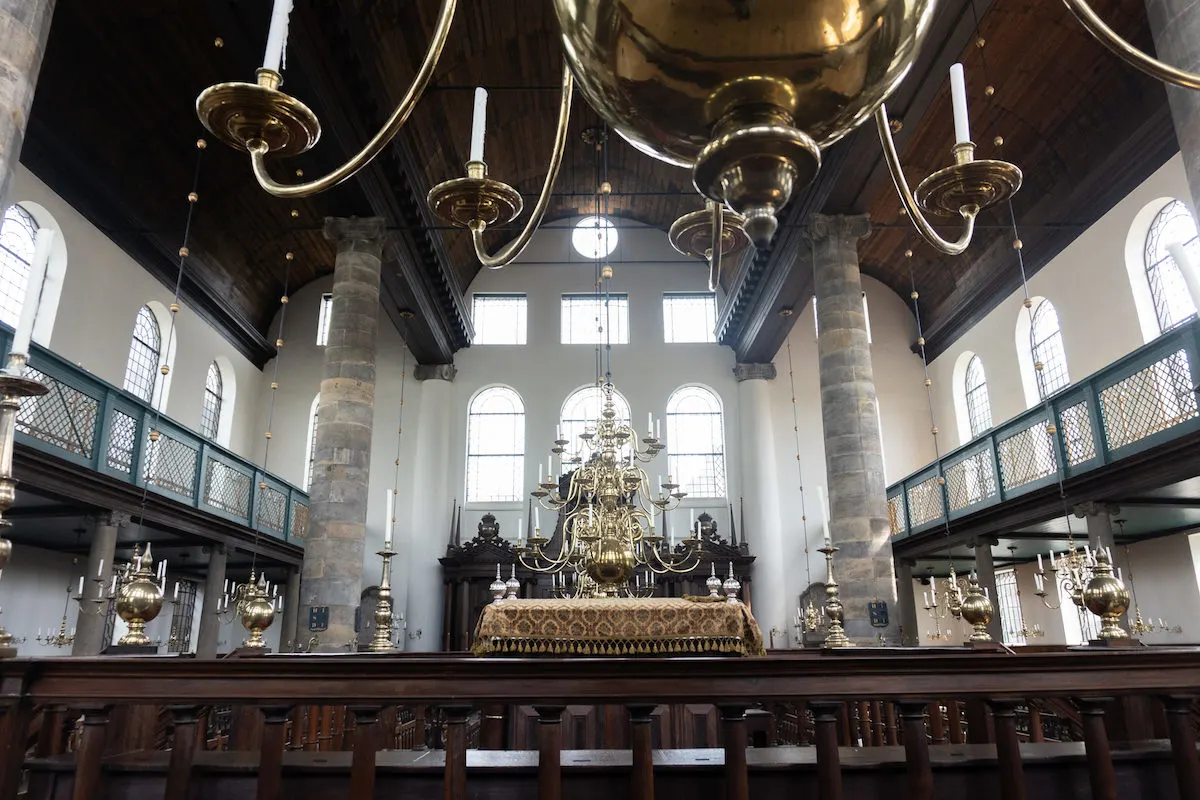

This synagogue was built in the late 17th century by the Sephardic population. The Portuguese Synagogue Amsterdam is the second oldest synagogue in Europe. It still serves as an active community with weekly Shabbat services, that we had the pleasure of going to during our visit. To attend services, you must be Jewish.
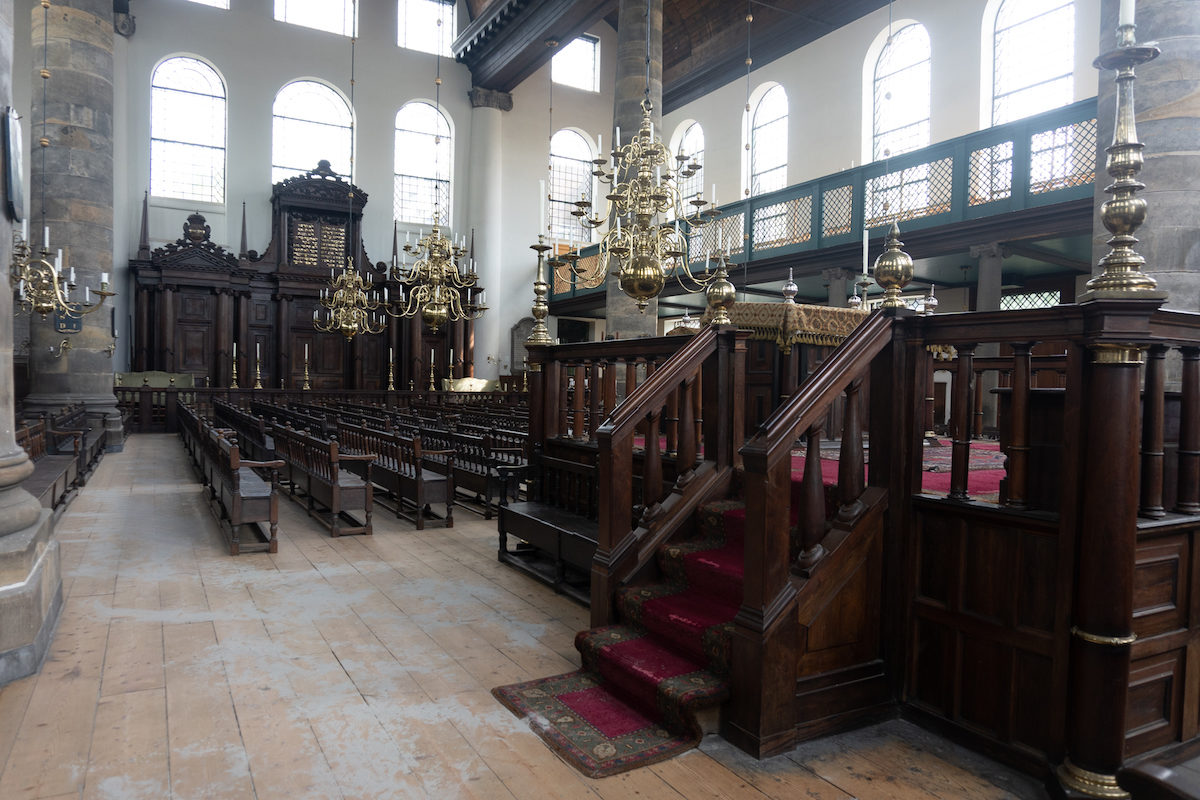

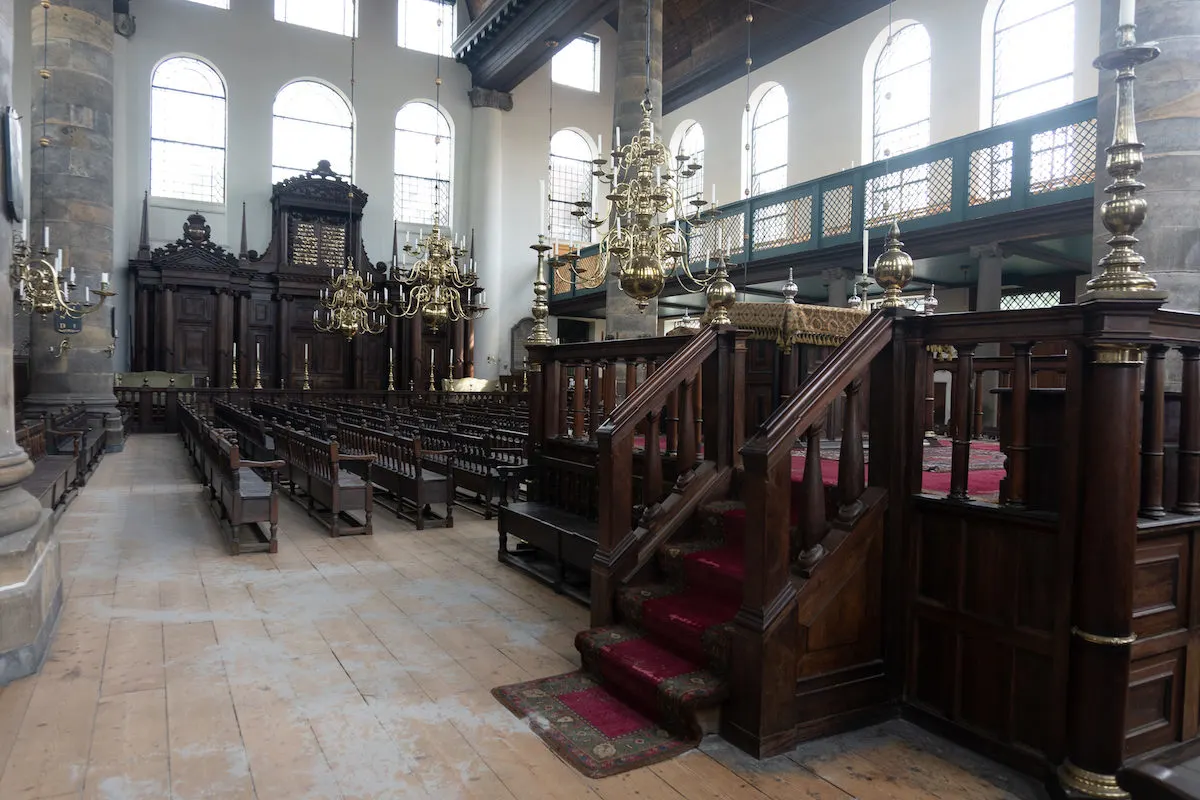

2. Jewish Historical Museum
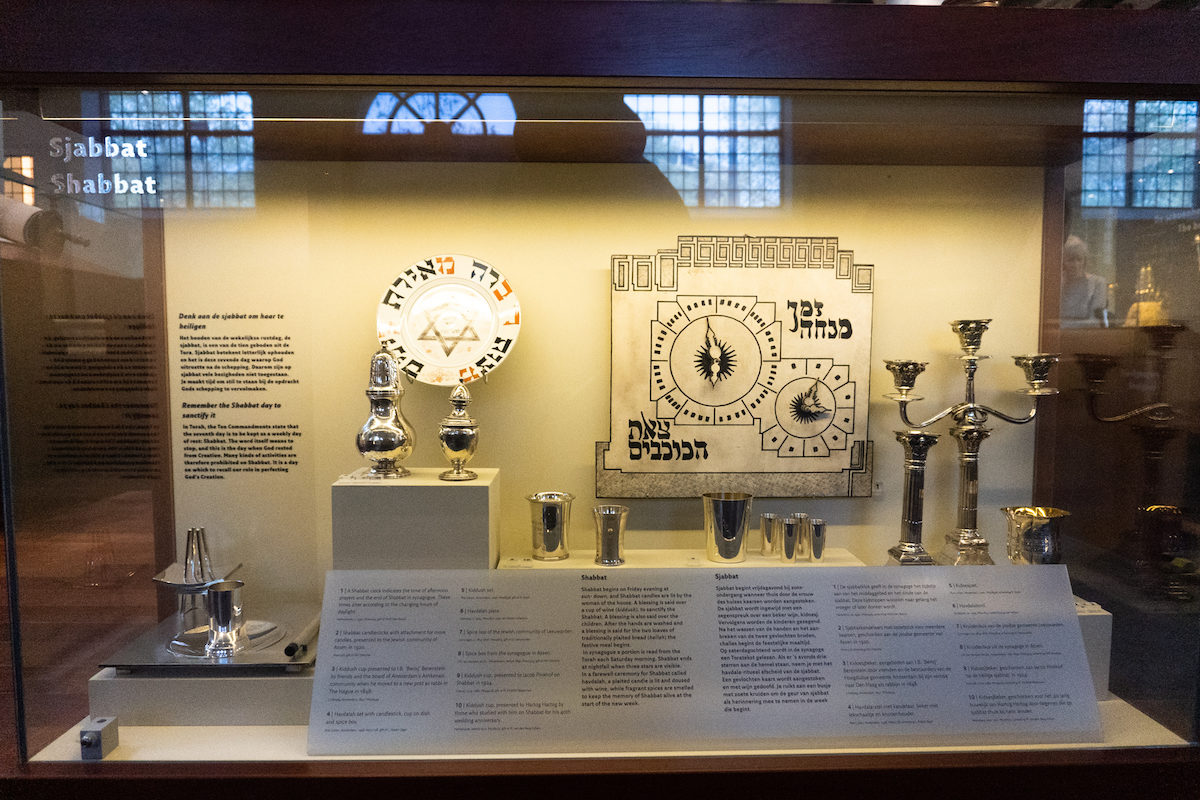

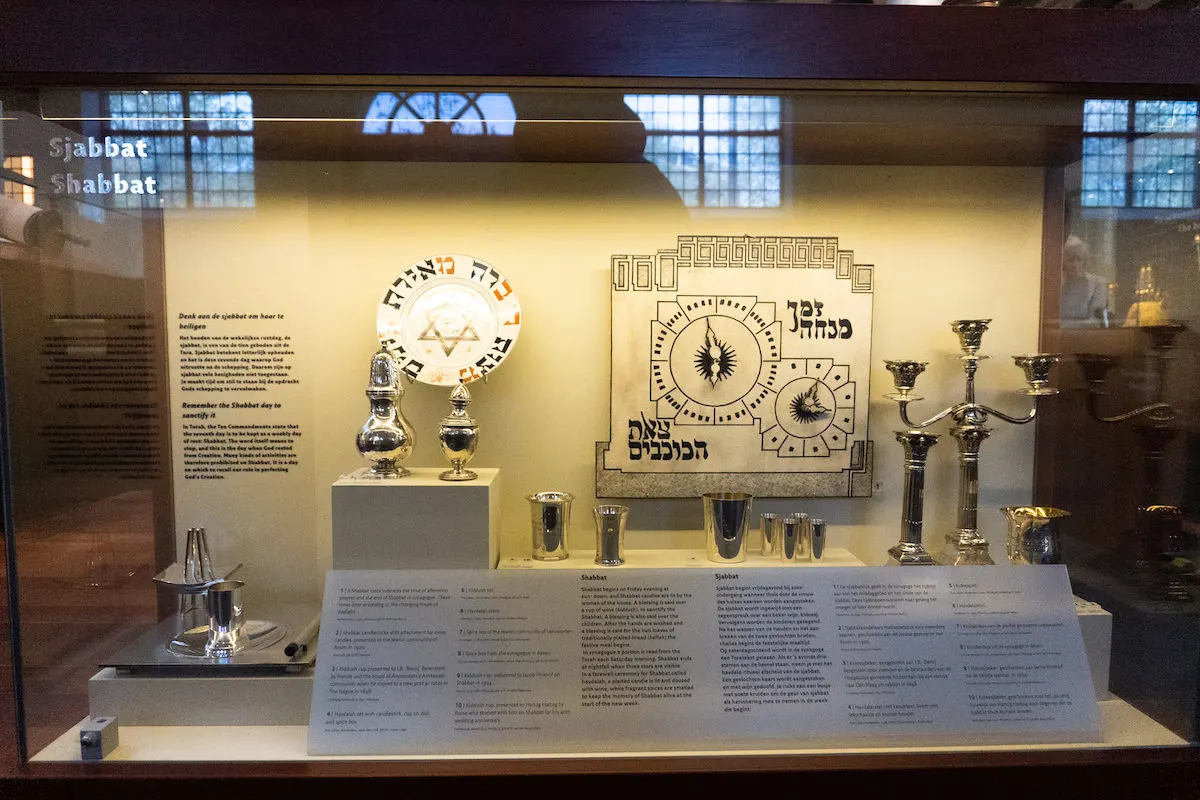

Out of all the Jewish Museums we have visited across Europe, this is our favorite. It is one of the most detailed museums with over 11,000 important artifacts related to the Jews. In this museum you can learn more about the Jewish culture, religious holidays and more.
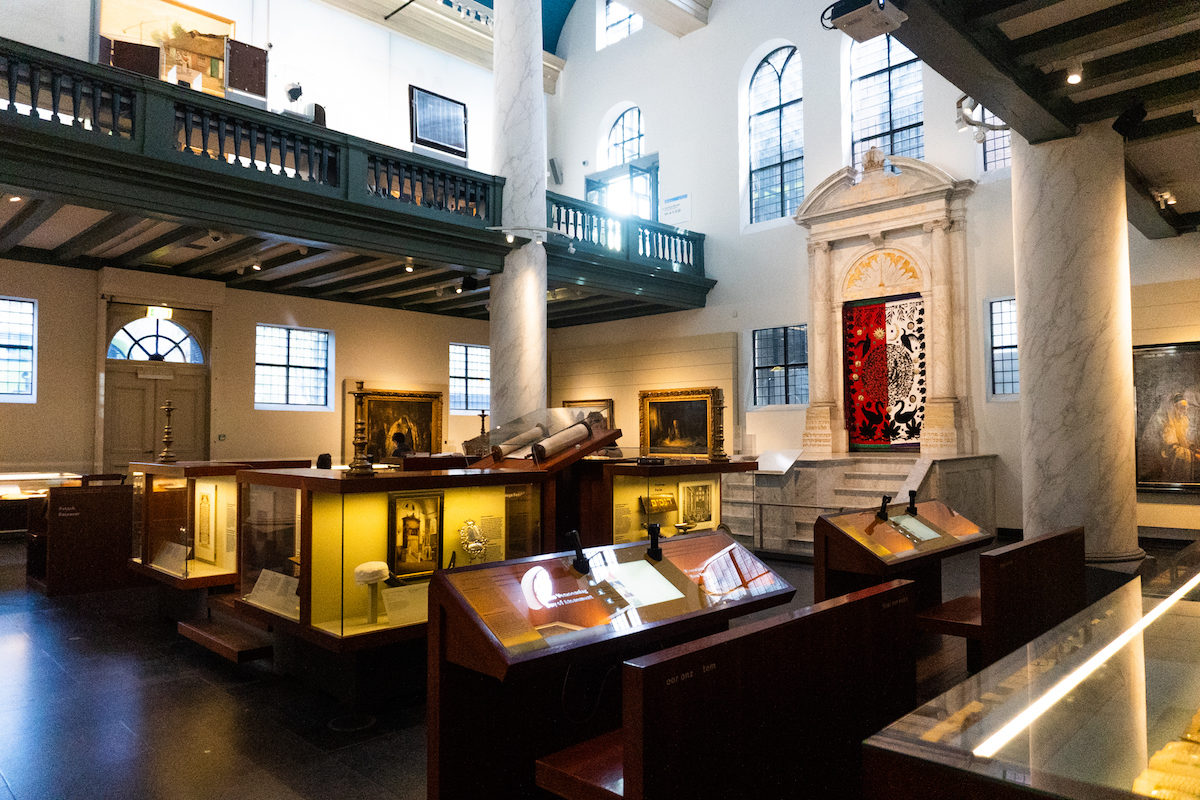

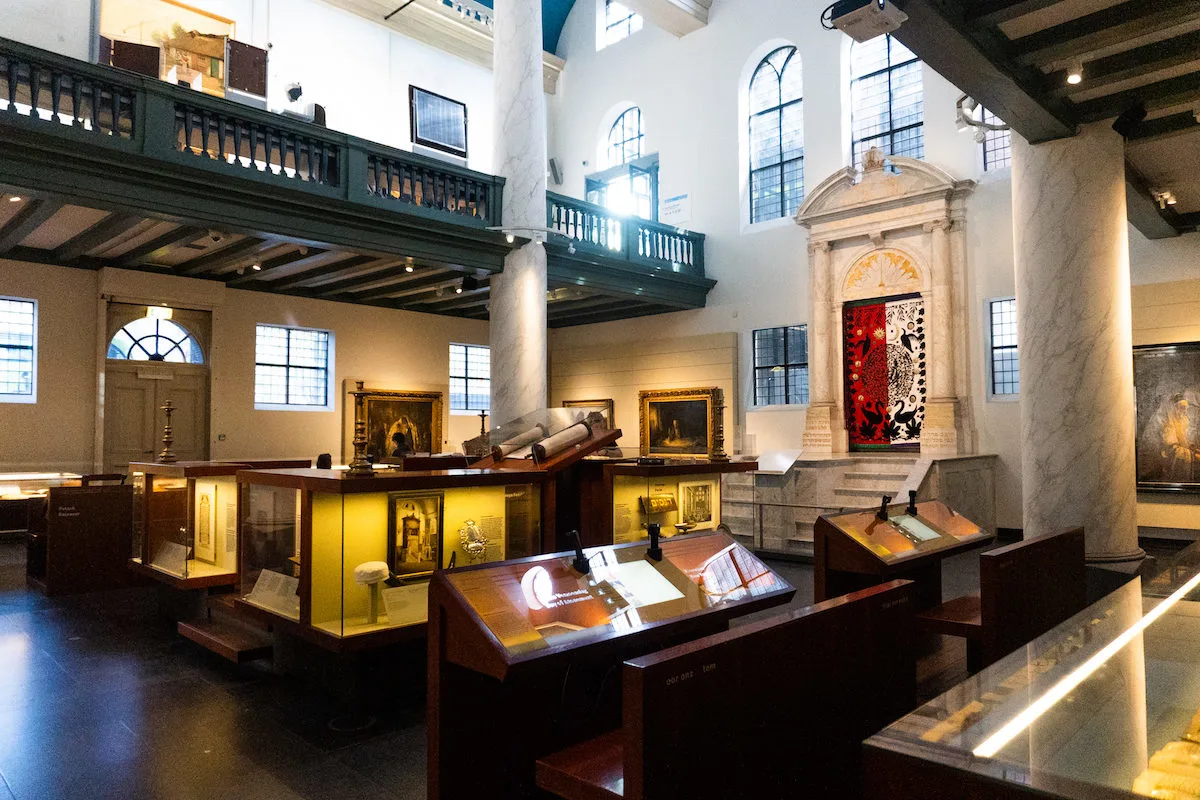

Even though it has some information about the Holocaust it is more focused on all the other aspects of the Jewish life. It has two permanent exhibitions focusing on the history of Jews in the Netherlands and a detailed exhibition about Jewish ceremonies, traditions and customs. The Museum is spread across four different former synagogues. There is also a museum for kids.
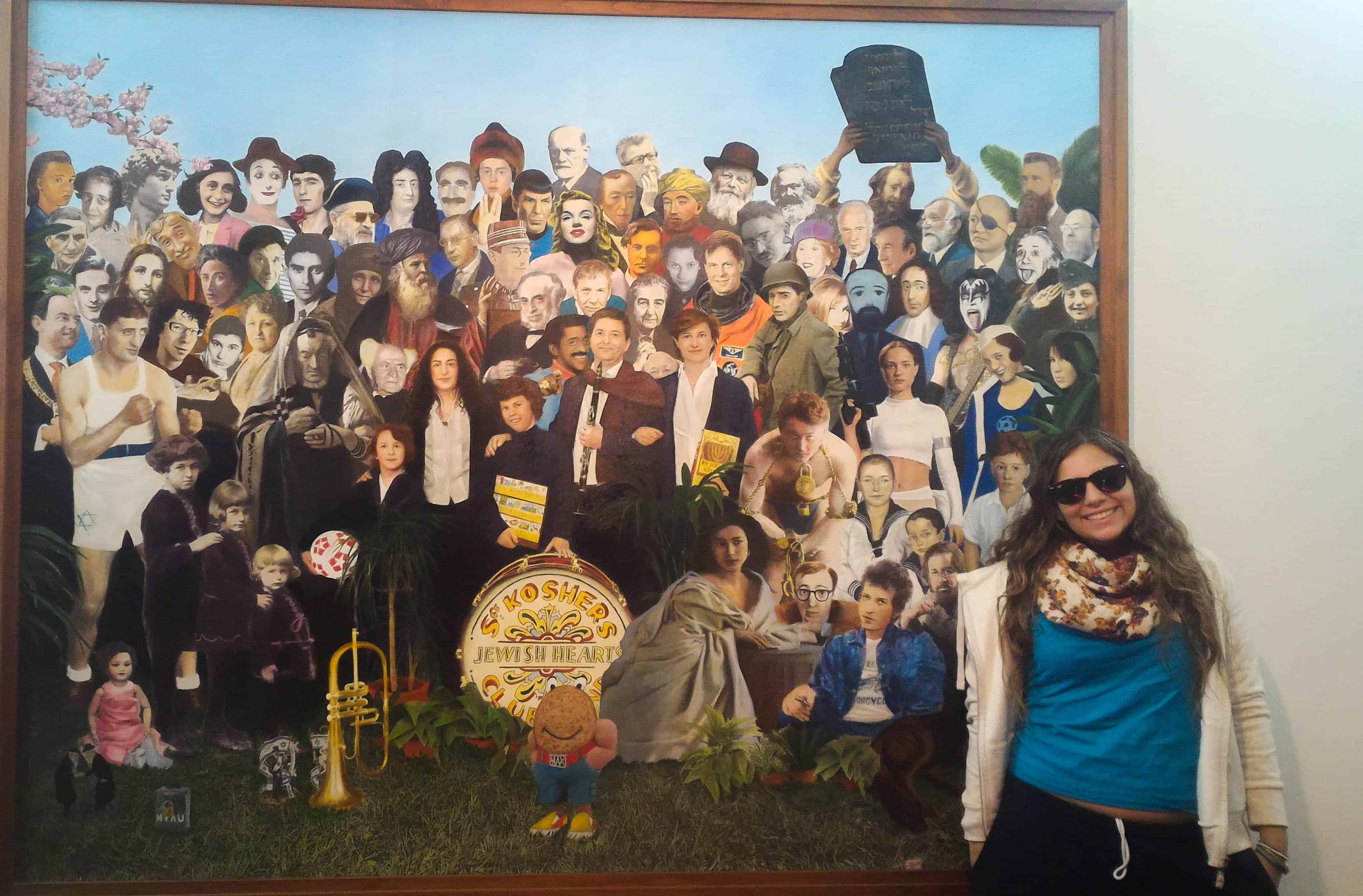

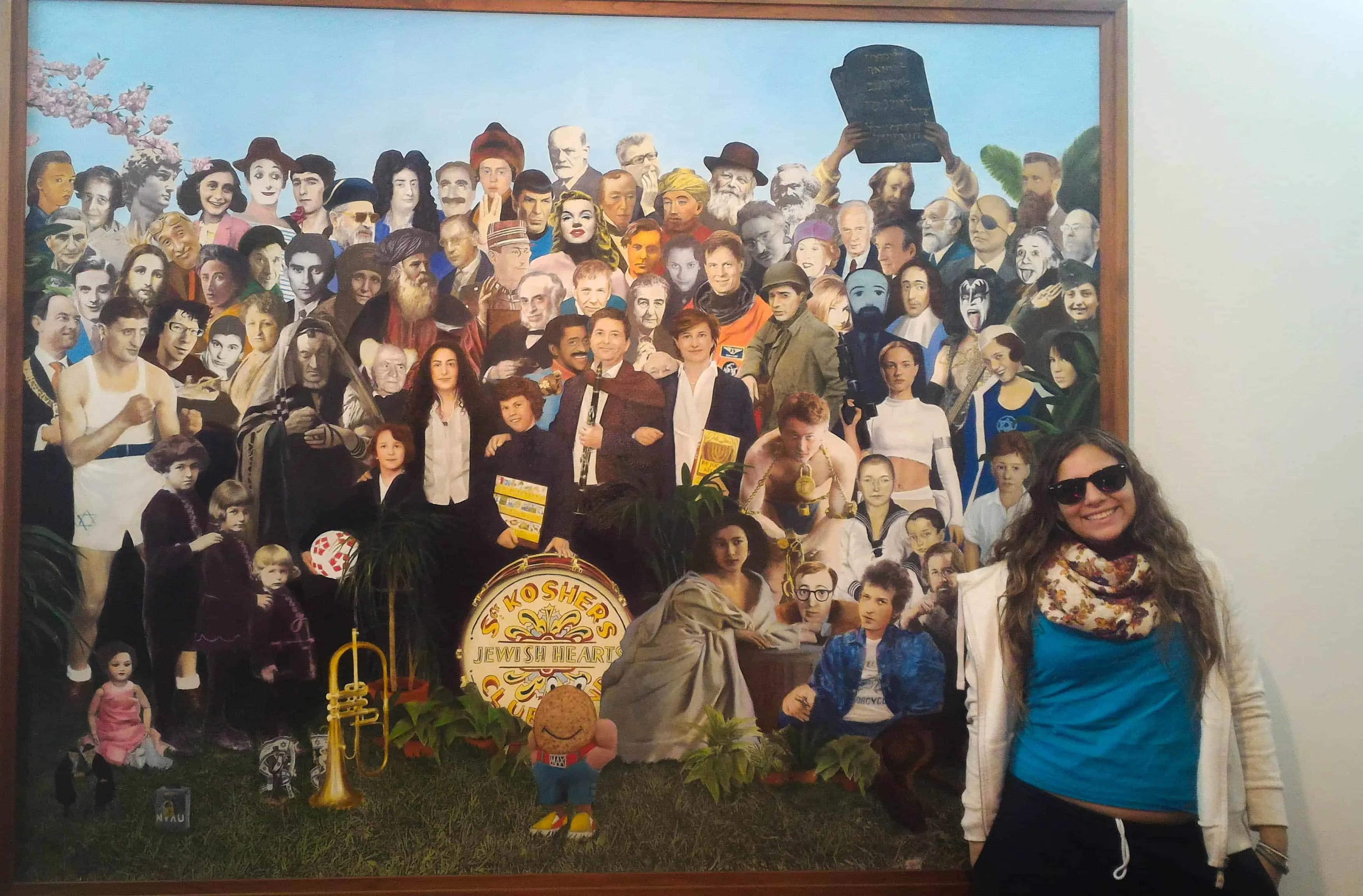

3. The National Holocaust Memorial Hollandsche Schouwburg
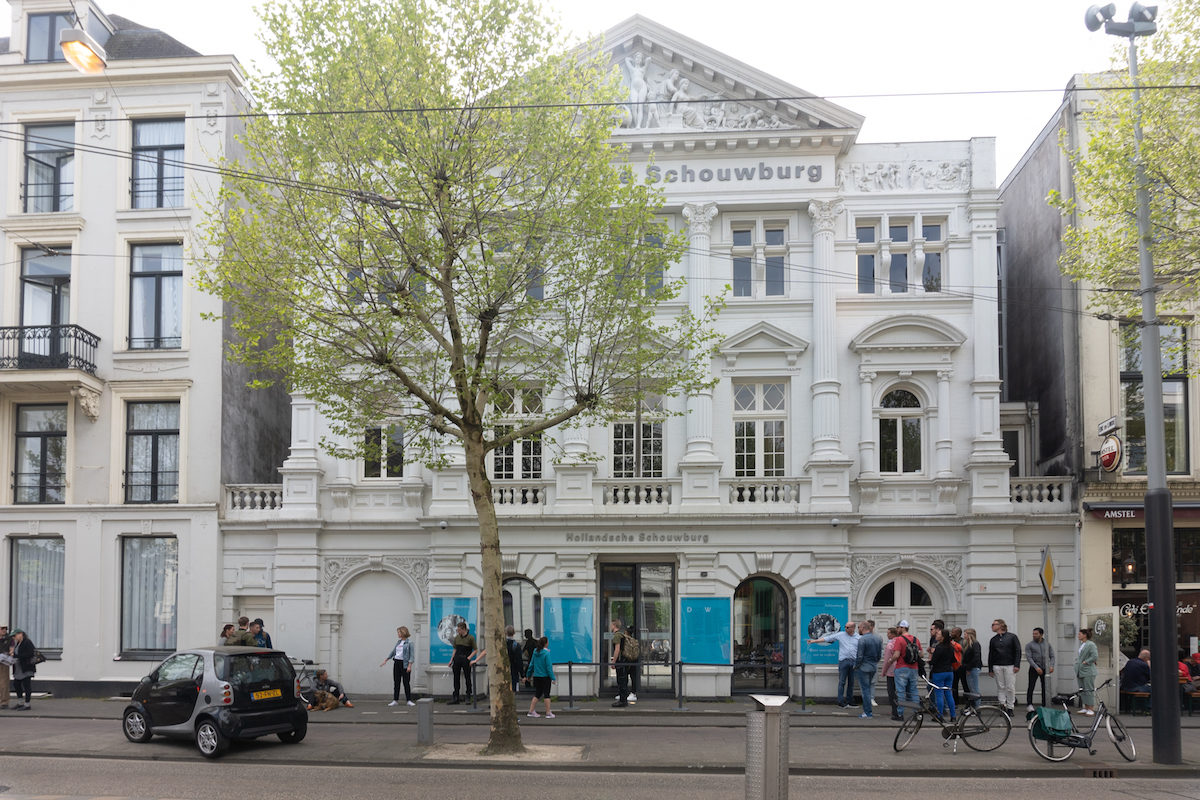

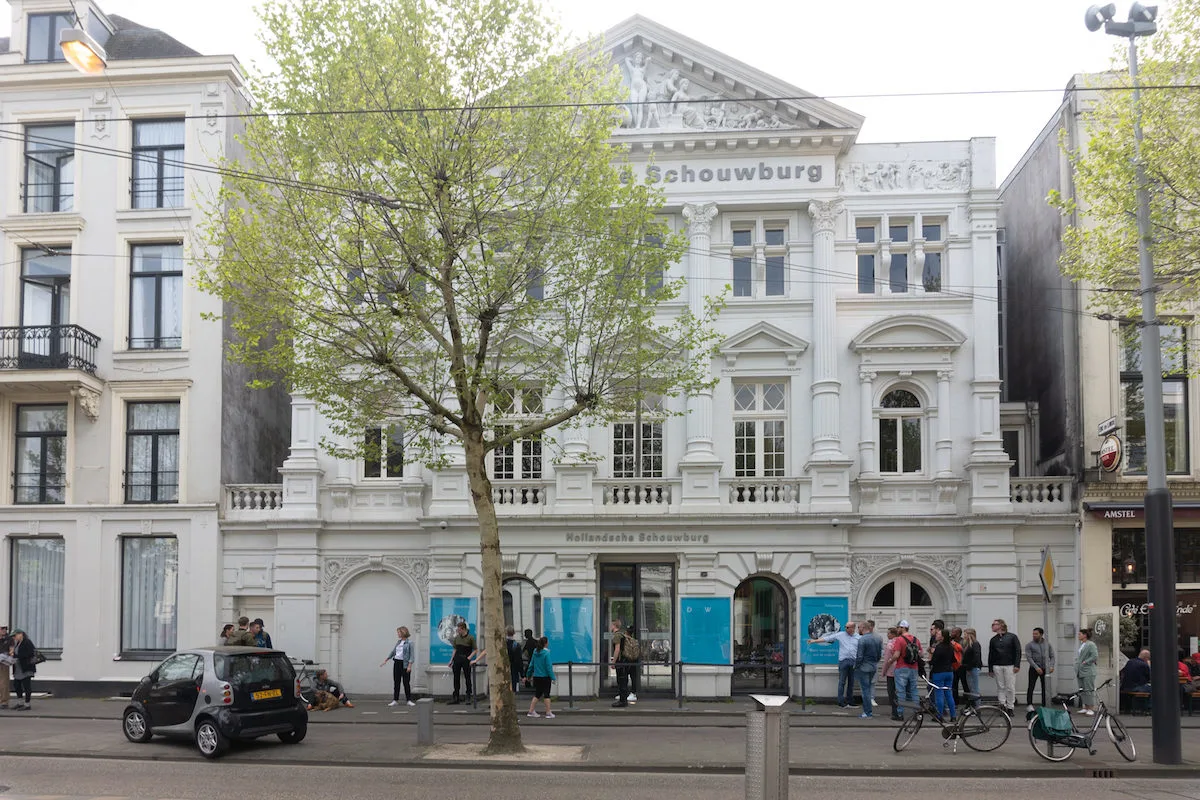

This Museum is focused on the Holocaust. The reason this theater was chosen as the home for the museum is because during the Nazi occupation it served as a deportation center. Thousands of Jews were forced to come here and then were sent to concentration camps on the Dutch-German border. The majority of the Jews that were gathered here ended up in extermination camps in Germany and occupied Poland.
4. The National Holocaust Museum
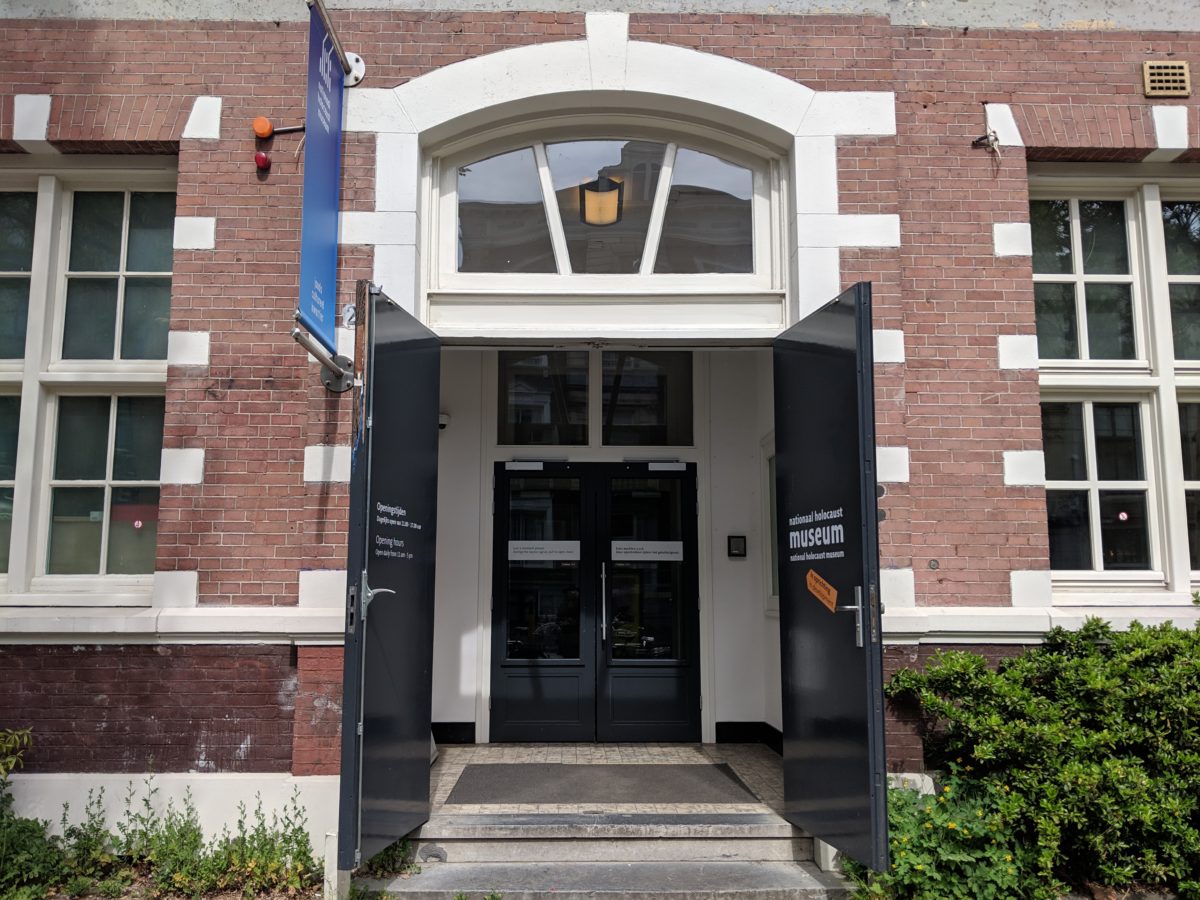

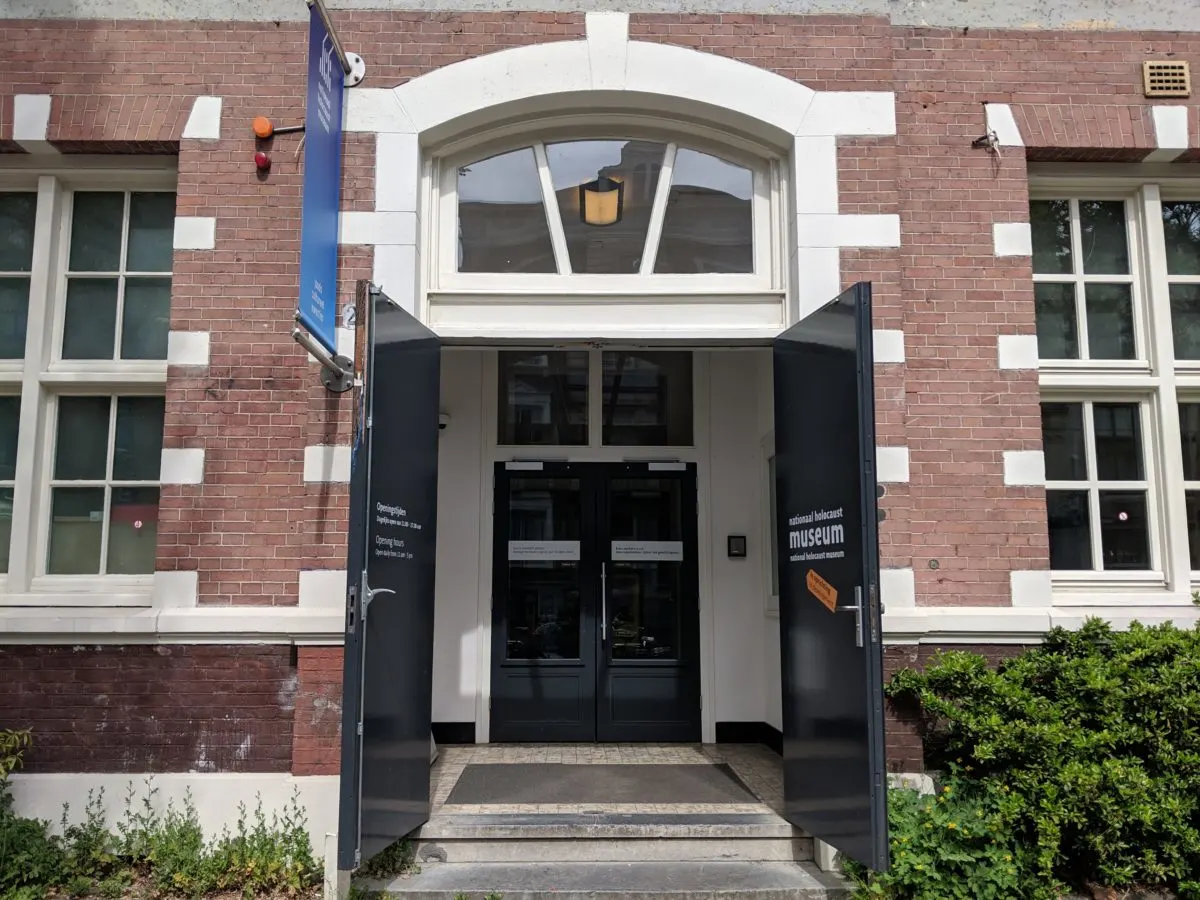

Across the street from the National Holocaust Memorial Hollandsche Schouwburg is the The National Holocaust Museum. This building used to be a school and here is where the Dutch resistance fighters smuggled Jewish children out of Amsterdam during the Nazi occupation. Learn in depth some of the stories of the people who were affected during the Holocaust.
5. February Protest Monument (The Dockworker)
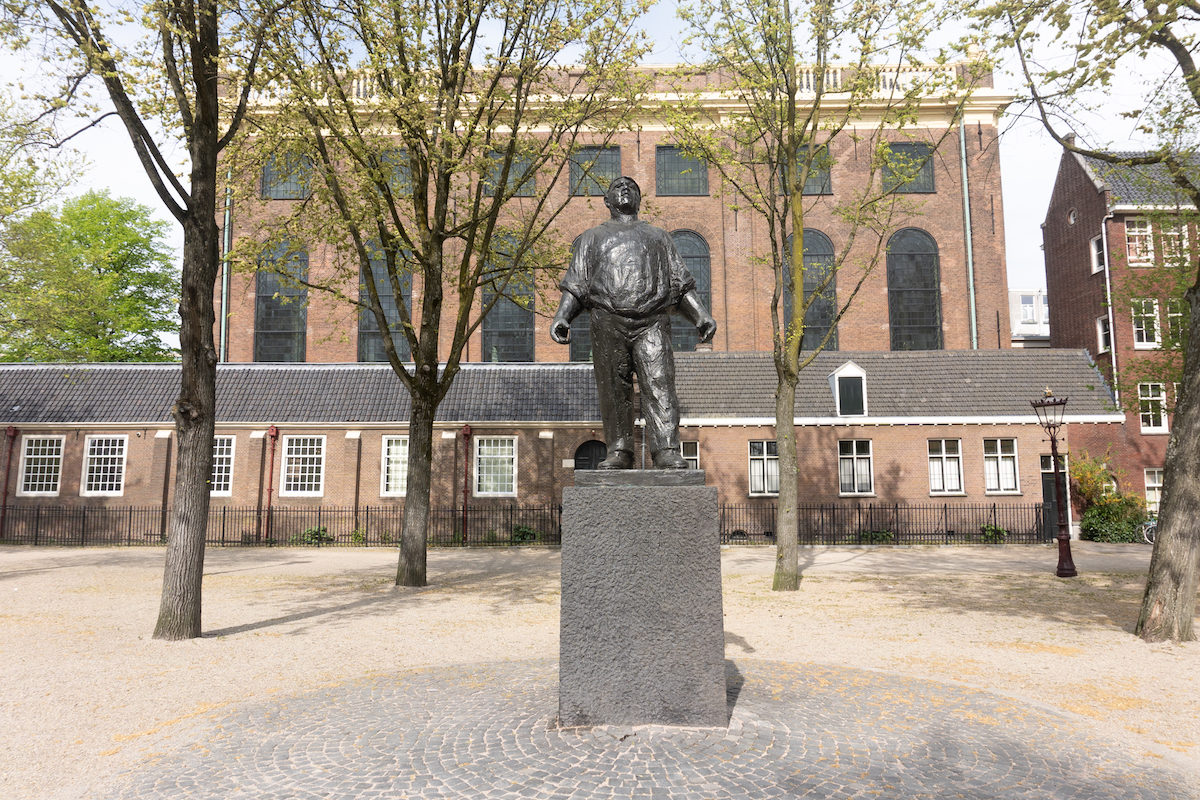

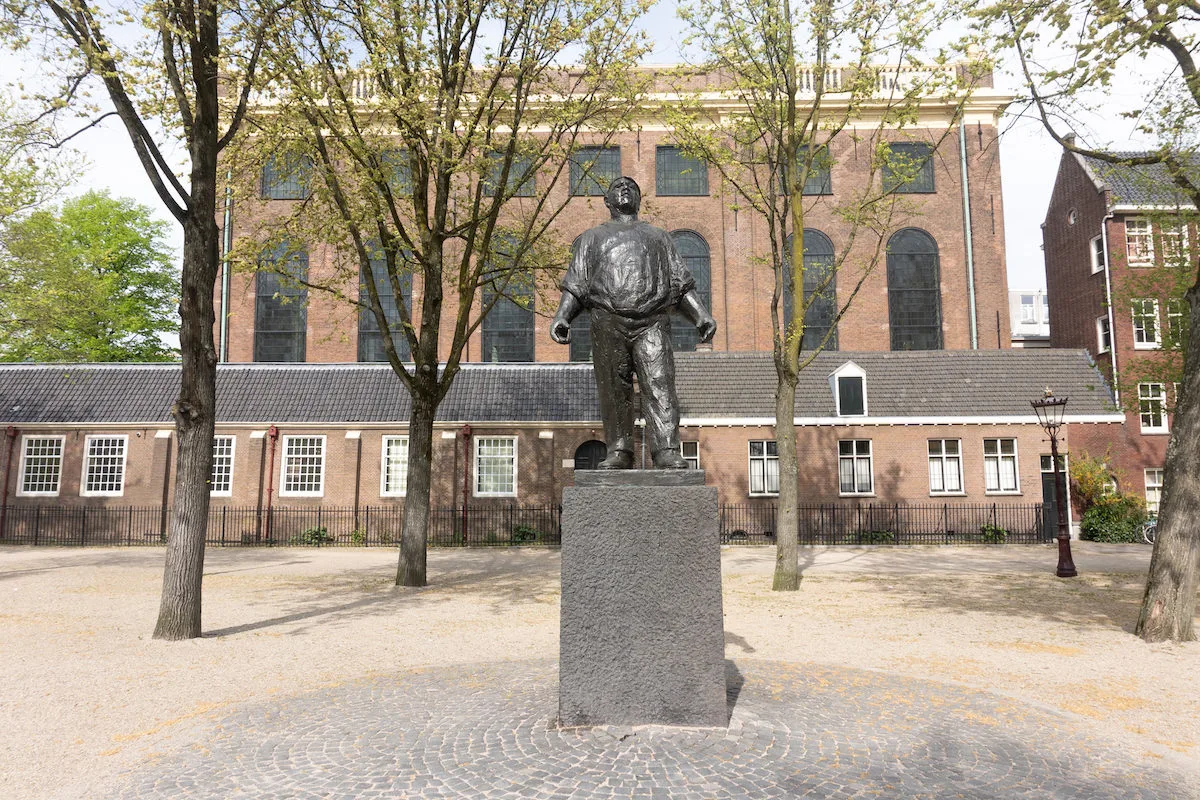

On February 24, 1941, the Amsterdam dock workers held a protest against the anti-Semitic policies of the Nazi occupation forces that began sending Jews to the concentration camp at Mauthausen. The protest quickly spread across the city.
Unfortunately the Nazis responded violently, killing nine protesters and injuring countless more. It stands a symbolic significance in the Netherlands that the community stood up against the Nazis in open protest, even though it failed in the end.
The monument, De Dokwerker, represents a striking worker called. The sculpture is by Mari Andriessen, a sculptor who refused to join the Nazi-led artist union during the war and even hid several Jewish friends at his home.
6. Auschwitz Monument
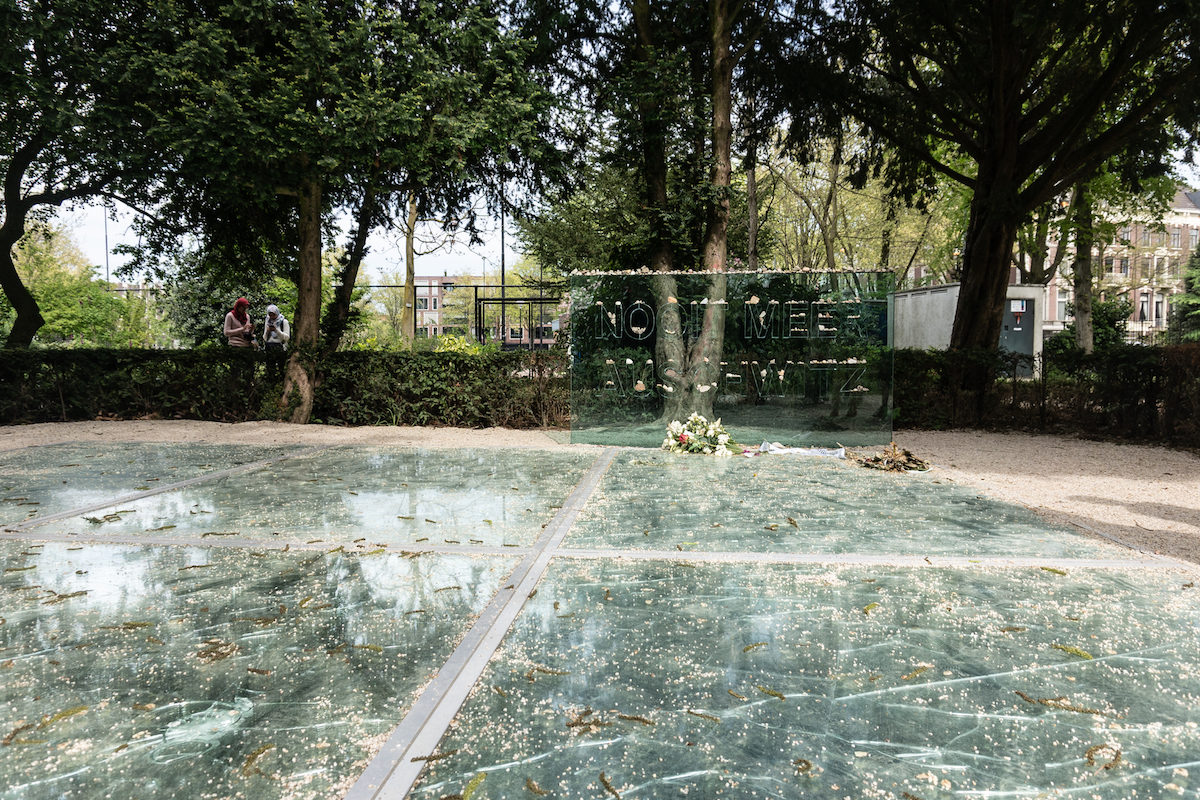

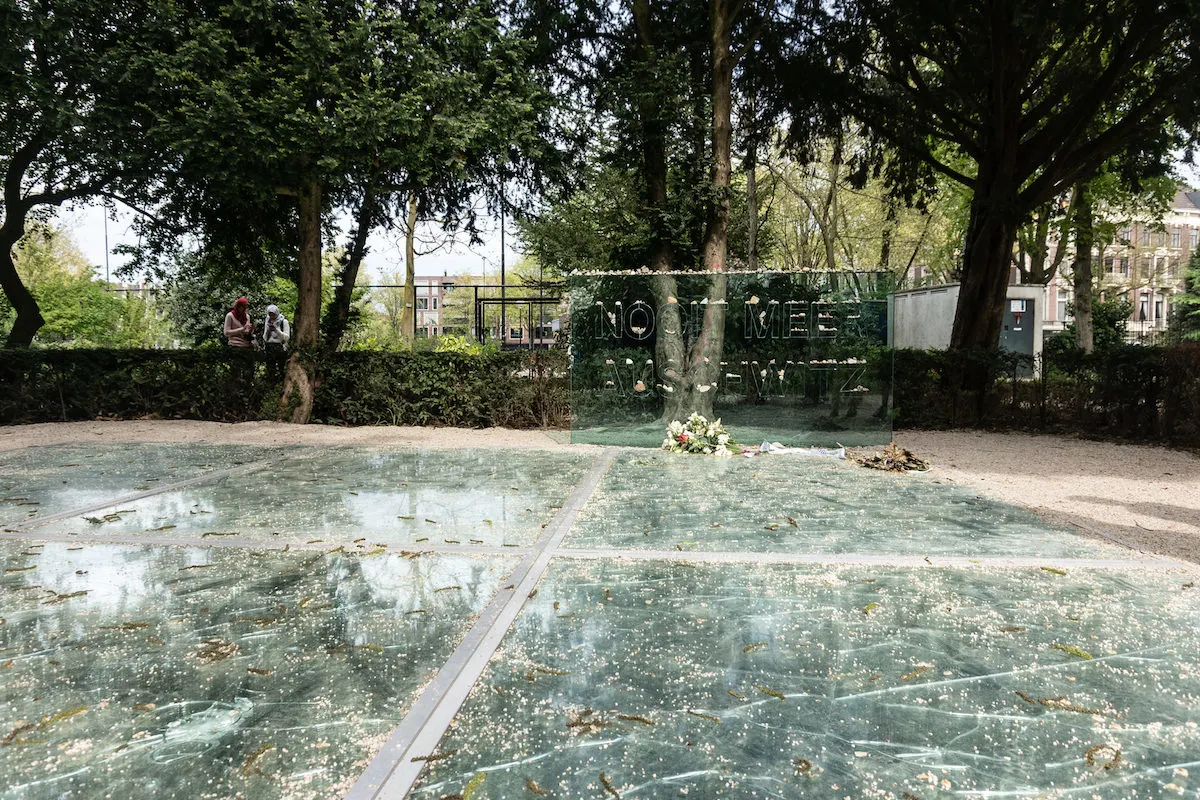

The “Never again Auschwitz” monument was designed by writer and artist Jan Wolkers. The monument has 6 broken glass mirrors reflecting the sky. Underneath the glasses is an urn holding ashes from Auschwitz.
7. The Piet Meerburg Bridge
Piet Meerburg was a resistance fighter in WWII that saved hundreds of Jewish children from a nursery meant to round up babies for deportation. There are other bridges around Amsterdam named after other members of the resistance such as Walter Suskind, Felix Halverstad and Lau Mazirel.
8. The Shadow Canal Monument
Along the edge of the canal you can see the names of 200 Jews who lived on the other side of the Niewe Keizersgacht. All of them were deported and murdered during the Shoah.
9. Jewish Boys Orphanage Monument
The markings in the pavement is all that is left to show where Megadle Jethonim, a home for Ashkenazi orphans, once stood. The words say “No one returned. May their memory be blessed.”
10. Spinoza Monument
Baruch Spinoza is one of the greatest philosophers in European history. He was born in Amsterdam, the descendant of a prominent Portuguese Jewish Family.
11. Anne Frank House
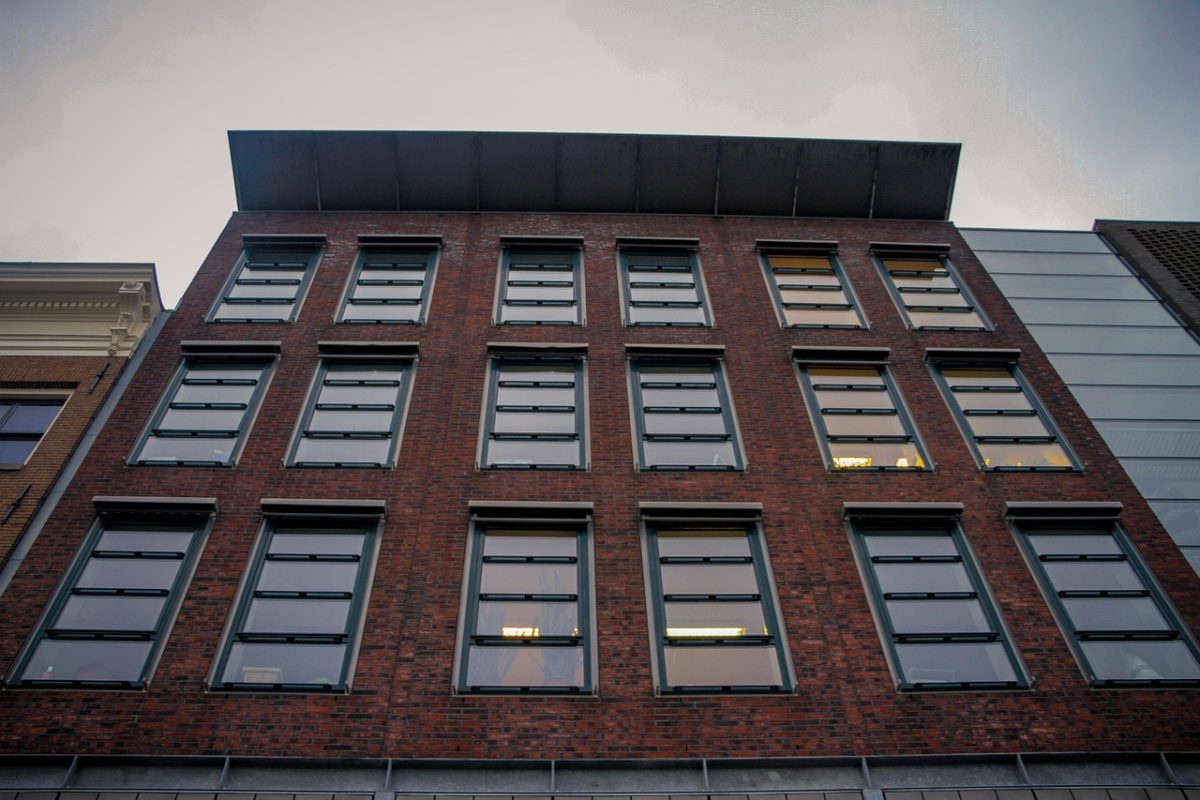

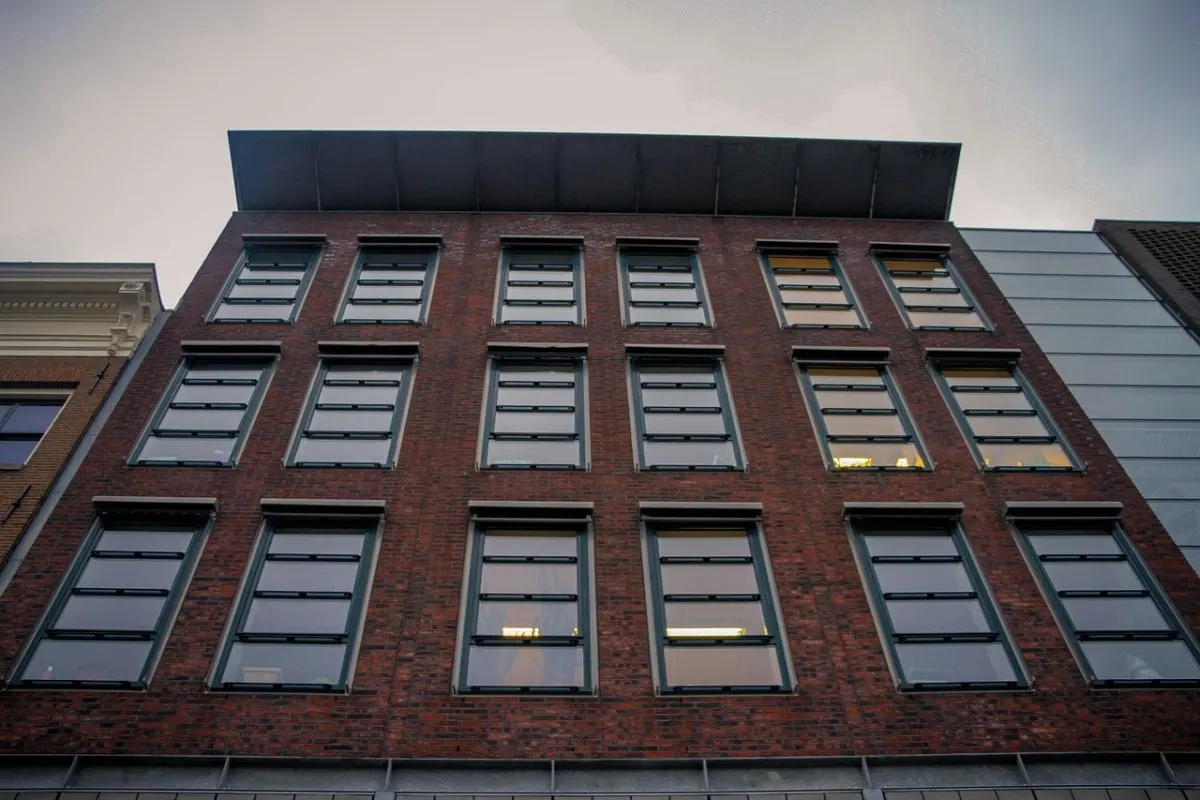

The Anne Frank House is one of the most important stops in Amsterdam. Anne Frank was a young Jewish girl in hiding during holocaust. It is a very powerful experience on the hidden life of Jews during the Shoah. We would argue it is the most important thing to do in Amsterdam. If you have never read Anne Frank: The Diary of a Young Girl, make sure to add it to your reading list.
The museum is open with the following schedule:
➳ April through October: Daily from 9:00AM to 9:00PM. (Saturdays from 9:00 AM to 10:00 PM). In July and August the museum is daily open till 10:00PM.
➳ November through March: Daily from 9:00AM to 7:00PM (Saturdays from 9:00AM to 9:00PM).
⇟ More articles from the Netherlands that might interest you:
➳ Read More: What to do in Amsterdam in one day
➳ Read More: The best things to do in Rotterdam in One Day
➳ Read More: Top 10 Most Romantic Destinations in Europe
Save this article for later ⇟
